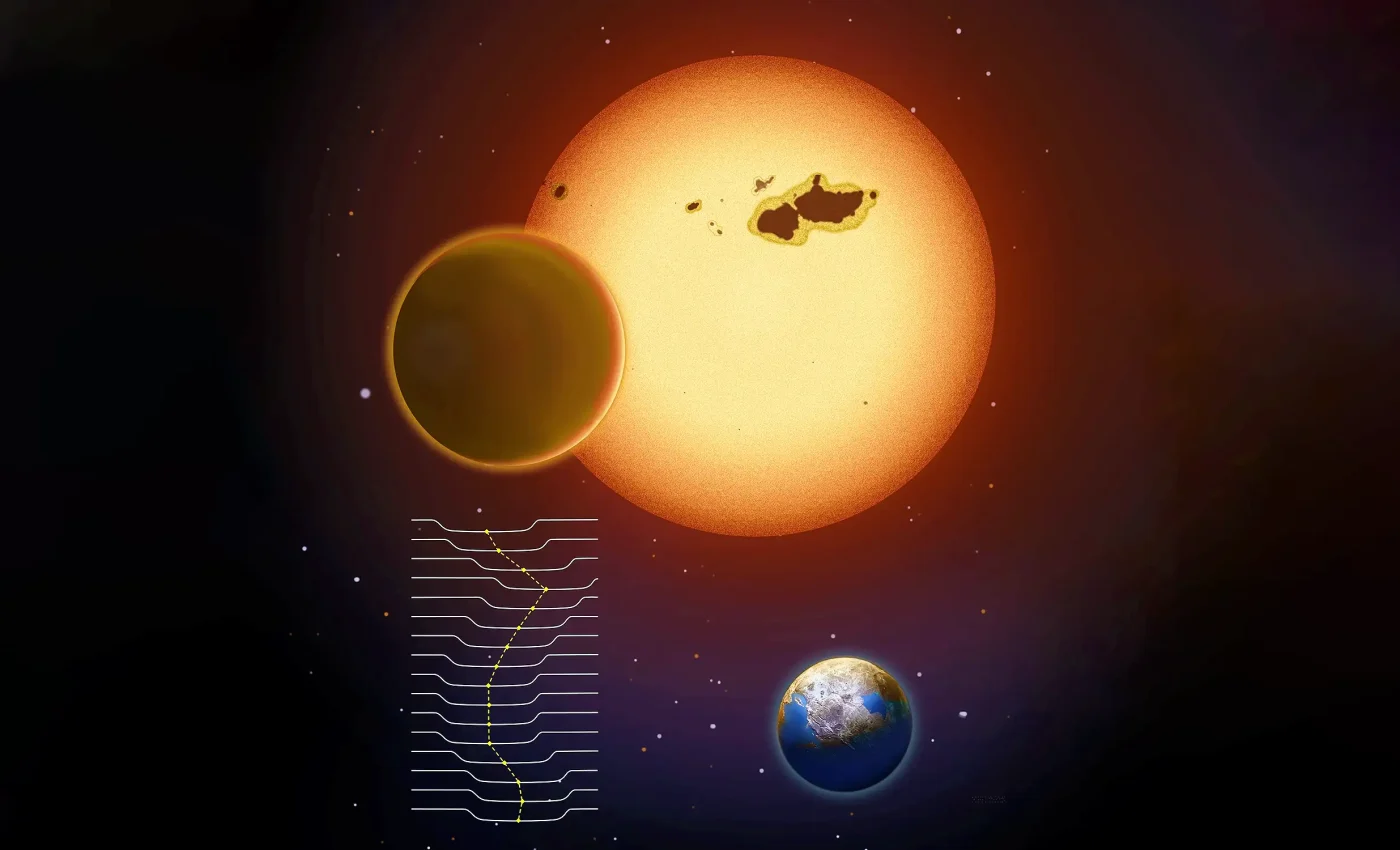
Massive 'super-Earth' discovered in the habitable zone of its star, possibly supporting life
For years, scientists have combed the skies for signs of distant planets and potential life. Their efforts have turned up countless intriguing discoveries, inspiring even more sophisticated ways to explore the universe.
Telescopes and measurement tools steadily improve, yet low-mass planets that resemble our own often remain elusive.
Many remain out of sight because their orbital alignments or subtle signals slip beneath the radar of traditional detection methods.
Leilei Sun, lead author from Yunnan Observatories of the Chinese Academy of Sciences, and other international researchers recently identified a super-Earth named Kepler-725c.
They examined data from an existing system using a specialized strategy that bypasses constraints typical of transit and radial velocity observations.
How planets are usually found
Planets outside our solar system, often called exoplanets, can be spotted in different ways.
One popular method, known as the transit approach, looks for slight dips in a star’s brightness when a planet passes between that star and our viewpoint.
Big exoplanets with short orbital cycles, like Kepler-725c, are easier to track with the transit technique because they frequently move across their stars.
Smaller planets with longer orbits are harder to notice. Their alignment with our line of sight is also less likely, so they often remain hidden.
Size of Kepler-725c grabs attention
Researchers have long sought planets that weigh up to 10 times Earth’s mass. These objects might form differently from heavier worlds and could share properties with Earth-like bodies.
Size and weight shape a planet’s environment. A mass closer to Earth’s can hint at conditions worth studying, including factors like rocky surfaces or possible water retention.
Some teams focus on the transit timing variation method (TTV). This strategy tracks how one planet’s gravity affects another planet’s orbit, causing shifts in the timing of its regular crossings.
“This discovery demonstrates that the transit timing variation method enables the detection and accurate mass measurement of a super-Earth/mini-Neptune within a solar-like star’s habitable zone,” wrote Sun.
They analyzed changes in the transits of Kepler-725b, a warm Jupiter, to spot Kepler-725c lurking in the same system.
Kepler-725c may support life
Because it doesn’t depend on visible transits or precise velocity shifts, TTV offers a way to spot planets that other tools miss.
It’s especially useful for systems where only one planet appears to transit, but its motion hints at the presence of another.
In these cases, gravitational effects act like breadcrumbs, leading scientists to hidden companions. Kepler-725c’s detection shows that even without direct sight, we can still piece together an accurate picture of a planet’s orbit and size.
Kepler-725c is roughly 2,472 light years from Earth, circling a G9V star in about 207.5 days. Its path brings it into a habitable zone during part of each orbit, and it receives approximately 1.4 times the solar radiation Earth gets at 1 astronomical unit.
Its orbital distance of around 0.674 AU might allow moderate temperatures, though many other factors influence habitability.
Researchers plan to keep investigating the interplay of heat, stellar variations, and atmospheric composition whenever possible.
New super-Earth missions
This find arrives as space agencies gear up for missions designed to probe smaller planets around Sun-like stars.
Europe’s PLATO effort and other similar upcoming projects, might produce more data that fits well with TTV-based exploration.
Scientists see this as a chance to piece together the conditions that could support life.
By pinpointing precise mass values and orbits, TTV can help describe a planet’s properties and place in the cosmic puzzle without the hurdles of standard detection methods.
‘Earth 2.0’ coming into focus
Spotting Kepler-725c using TTV gives scientists a practical way to hunt for more non-transiting planets that sit in their stars’ habitable zones.
These worlds are hard to see directly but could still meet several conditions required for life.
The research team believes future missions will pair well with this method, opening up the chance to uncover more small, long-orbiting planets that older strategies miss.
These discoveries could sharpen how we target potential Earth-like planets across the galaxy.
Even with better tools and fresh strategies, confirming habitability remains a slow process. We still need direct imaging or atmospheric data to say whether a planet like Kepler-725c could support life.
In many cases, the data we have are hints, not answers. Mass, orbit, and radiation are helpful clues, but they don’t tell us if there’s water, oxygen, or a stable surface, things life as we know it might need.
Team that discovered Kepler-725c
The research team includes scientists from Yunnan Observatories, Hamburg Observatory, Xi’an Jiaotong-Liverpool University, and the Nanjing Institute of Astronomical Optics and Technology. Their joint effort reflects growing global interest in tracking subtle planetary signals across distant solar systems.
Funding for the work came from the National Natural Science Foundation of China and the Yunnan Fundamental Research Project, supporting data analysis and long-term modeling efforts.
The study is published in Nature Astronomy.
—–
Like what you read? Subscribe to our newsletter for engaging articles, exclusive content, and the latest updates.
Check us out on EarthSnap, a free app brought to you by Eric Ralls and Earth.com.
—–













